Consider the following program:
#include <iostream>
#include <array>
#include <unistd.h>
using clock_value_t = long long;
__device__ void gpu_sleep(clock_value_t sleep_cycles)
{
clock_value_t start = clock64();
clock_value_t cycles_elapsed;
do { cycles_elapsed = clock64() - start; }
while (cycles_elapsed < sleep_cycles);
}
__global__ void dummy(clock_value_t duration_in_cycles)
{
gpu_sleep(duration_in_cycles);
}
int main()
{
const clock_value_t duration_in_clocks = 1e7;
const size_t buffer_size = 2e7;
constexpr const auto num_streams = 8;
std::array<char*, num_streams> host_ptrs;
std::array<char*, num_streams> device_ptrs;
std::array<cudaStream_t, num_streams> streams;
for (auto i=0; i<num_streams; i++) {
cudaMallocHost(&host_ptrs[i], buffer_size);
cudaMalloc(&device_ptrs[i], buffer_size);
cudaStreamCreateWithFlags(&streams[i], cudaStreamNonBlocking);
}
cudaDeviceSynchronize();
for (auto i=0; i<num_streams; i++) {
cudaMemcpyAsync(device_ptrs[i], host_ptrs[i], buffer_size, cudaMemcpyDefault, streams[i]);
dummy<<<128, 128, 0, streams[i]>>>(duration_in_clocks);
cudaMemcpyAsync(host_ptrs[i], device_ptrs[i], buffer_size, cudaMemcpyDefault, streams[i]);
}
usleep(50000);
for (auto i=0; i<num_streams; i++) { cudaStreamSynchronize(streams[i]); }
for (auto i=0; i<num_streams; i++) {
cudaFreeHost(host_ptrs[i]);
cudaFree(device_ptrs[i]);
}
}
I'm running it on an GTX Titan X, with CUDA 8.0.61, on Fedora 25, with driver 375.66. The timeline I'm seeing is this:
There a few things wrong with this picture:
- As far as I can recall there can only be one HtoD transfer at a time.
- All of the memory transfers should take basically the same amount of time - they're of the same amount of data; and there's nothing else interesting going on with the PCIe bus to affect transfer rates so much.
- Some DtoH bars like like they're stretched out until something happens on another stream.
- There's this huge gap in which there seems to be no Computer and no real I/O. And even if the DtoH for all previously-completed kernels was to occupy that gap, that would still leave a very significant amount of time. That actually looks like a scheduling issue rather than a profiling error.
So, how should I interpret this timeline? And where does the problem lie? (Hopefully not with the programmer...)
I should mention that with less streams (e.g. 2) the timeline looks very nice on the same SW+HW:

